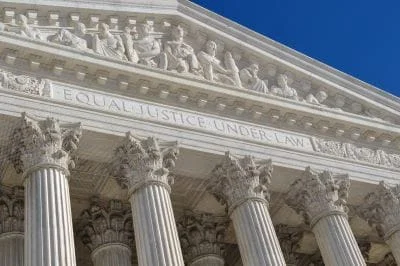The murky parameters of the ministerial exception

The Supreme Court of the United States will hear a pair of consolidated cases from California in which they will consider how far the ministerial exception to anti-discrimination in employment law reaches. The ministerial exception is a court-made doctrine based on the federal Constitution’s provisions that separate church and state and guarantee the free exercise of religion.
Religious institutions and the ministerial exception
Almost all employers in the U.S. are subject to the ban on illegal discrimination in the workplace based on protected personal characteristics like race, sex, disability, age, religion, and others. However, churches, mosques, synagogues, temples, and other religious institutions are exempt from these laws related to their employment of ministers. A familiar example is the Catholic Church’s practice of ordaining only male priests.
A religious institution can choose the minister who will carry out arguably the most important duties of its religion. So, if the institution fires a minister based on the minister’s age, disability, or race, the usual protections against discrimination afforded to most employees will not protect the minister.
Pushing the boundary
While the ministerial exception seems clear on its face, religious institutions have claimed that the exception applies not only to clergy, but also to some other employees who have some religious duties, even if most of their responsibilities are not religious. The U.S. Supreme Court has only decided one case, Hosanna-Tabor Evangelical Lutheran Church and School v. E.E.O.C., that addressed the issue of who is considered a minister under this exception.
In that case, the court refused to “adopt a rigid formula” to determine who is and who is not a minister, and instead looked at “all the circumstances of … employment,” concluding that a teacher in a Lutheran school was a minister for purposes of the exception. The teacher had completed a religious study program and commissioning process, received the title of minister, taught religion, led students in prayer, took students to services, and occasionally led services. The court found that the church and the teacher herself held the teacher out as a minister and that through her duties she shared the church’s faith and furthered its mission.
Because the Court determined that the teacher was a minister, she fell under the ministerial exception and the church could not be held liable for terminating the teacher based on her disability.
Two new cases
In December, the Supreme Court agreed to hear Our Lady of Guadalupe School v. Morrissey-Berry and St. James School v. Biel, two cases in which teachers in Catholic schools alleged illegal discrimination based on age and disability, respectively. The teachers in these cases had fewer religious duties than the teacher in Hosanna-Tabor as well as none of the formal training – nor were they given the title of minister. Additionally, their duties were mostly secular.
These cases will be important for religious institutions to understand the extent to which they must follow anti-discrimination laws in their employment practices. On the flip side, the rulings from the Court may help employees of these institutions gain a better understanding of the protections afforded to them in the workplace.